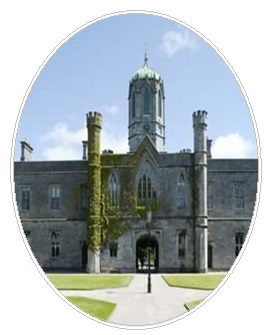-
Courses

Courses
Choosing a course is one of the most important decisions you'll ever make! View our courses and see what our students and lecturers have to say about the courses you are interested in at the links below.
-
University Life

University Life
Each year more than 4,000 choose University of Galway as their University of choice. Find out what life at University of Galway is all about here.
-
About University of Galway

About University of Galway
Since 1845, University of Galway has been sharing the highest quality teaching and research with Ireland and the world. Find out what makes our University so special – from our distinguished history to the latest news and campus developments.
-
Colleges & Schools

Colleges & Schools
University of Galway has earned international recognition as a research-led university with a commitment to top quality teaching across a range of key areas of expertise.
-
Research & Innovation

Research & Innovation
University of Galway’s vibrant research community take on some of the most pressing challenges of our times.
-
Business & Industry

Guiding Breakthrough Research at University of Galway
We explore and facilitate commercial opportunities for the research community at University of Galway, as well as facilitating industry partnership.
-
Alumni & Friends

Alumni & Friends
There are 128,000 University of Galway alumni worldwide. Stay connected to your alumni community! Join our social networks and update your details online.
-
Community Engagement

Community Engagement
At University of Galway, we believe that the best learning takes place when you apply what you learn in a real world context. That's why many of our courses include work placements or community projects.
Incoming Students
Welcome to the University of Galway Erasmus Programme
Information for Incoming Erasmus Students
|
Congratulations! You have made a very important decision in relation to your academic career - the decision to study abroad as an Erasmus student. We are delighted that you have chosen the University of Galway (University of Galway) as your international study destination. Today we have over 17,000 students studying at University of Galway. Approximately 2,300 of these are enrolled as international students for a semester or a year, or are taking full degree programmes. We have a long and valued tradition of learning and scholarship here in Galway and in recent years the University has committed itself to expanding and deepening its international links through staff and student exchanges and research collaboration. This University places a tremendous value on the cultural and academic contribution that you will make during your time with us. We are confident that in return you will find your stay here both intellectually stimulating and personally enriching. Cuireann Ollscoil na Gaillimhe céad míle fáilte romhat! |
The Clock Tower, symbol of the University |
Ireland
Ireland is an island situated to the Northwest of the continent of Europe, with a population of five million people. It is a sovereign independent state and a parliamentary democracy. The country gained its independence from Great Britain in 1922 and since then has enjoyed a stable government. Ireland is a full member of the European Union.
The Irish Sea separates Ireland from Britain. The climate of Ireland is temperate; the winter temperature averages about five degrees Celsius and rises to an average of sixteen degrees Celsius in summer. Temperatures above twenty-five degrees Celsius are uncommon.
One of the six Celtic nations with its own distinctive Irish culture and language, Ireland is long renowned for its strong tradition of development and educational links with other nations. Known in the past as 'The Island of Saints and Scholars', today Ireland has an excellent educational infrastructure and an exceptionally high rate of participation in third-level education. Irish (Gaelic) is the first official language although it is English that is most widely spoken. Some Irish words that you may see regularly are: Fáilte (Welcome), Gardaí (Police), Fir (Gentlemen), Mná (Women).
Irish educators at home and abroad have contributed to the development of many societies and nations. In the fifth and sixth centuries, the organisation of early Christian Church in Ireland was based on monastic settlements. Some of these, such as Glendalough and Clonmacnoise, later became famous centres of learning, attracting many students from abroad. Later, Irish monks travelled all over Europe establishing monasteries and centres of learning.
Galway
Galway and the West of Ireland
King Richard III granted Galway its first Charter in 1484, and the town has been a seat of learning since the 1560s, when its merchant families founded an academy for students from all over Ireland. Traces of Galway's rich medieval past can still be seen today in the maze of winding medieval lanes and old merchants' mansions in the city centre.
Galway is now the third-largest city in the Republic, with a population of 76,000, almost 20% of which is made up of third-level students. The interdependence of town and University has helped to build a compact, thriving city that caters to young people like few other places can. Its youthful energy is reflected in the numerous internationally-renowned literary, arts and sporting events that are hosted there each year, such as the Cúirt International Festival of Literature, the Galway Film Fleadh, the Galway Arts Festival, and the Galway Racing Festival. Regarded by many as the cultural capital of Ireland, Galway is home to the well-known Druid Theatre Company, the Macnas Street Theatre Company and An Taibhdhearc, the national Irish-language theatre company.
Galway is located on the doorstep of Connemara, the largest Gaeltacht (Irish-speaking area) in Ireland and an area of wild and majestic beauty. With its unique landscape of lakes, bogs and mountains, it is among the most evocative part of the country. Anyone wishing to experience the Ireland of rugged countryside, castles, lakes and rivers will not be disappointed; other attractions not far from the city are the Burren and the Aran Islands.
A particular feature of Galway and its environs is the fact that, in addition to the city’s strong cosmopolitan atmosphere, the older Gaelic culture of Ireland - in music, song and language - is especially strong and vibrant in the western capital. This means that a visiting student can conduct all his/her business effectively and easily in English, but can also, if he or she wishes, encounter the richness of Ireland’s Celtic culture in all its forms.
The University
The University
The University was founded in 1845 as Queen's College Galway. It was one of three Queen's Colleges founded under the Queen's Colleges (Ireland) Act, 1845, the others being located in Belfast and Cork. The foundations of Queen's College Galway were laid in 1846. The architect, Joseph B. Keane, who used local stone quarried during the Famine, was strongly influenced by the Gothic Revival in Architecture then in full swing. By 1847, despite the Famine, construction was well advanced and Queen's College Galway opened its gates on 30th October, 1949, to 68 students.
Under the Irish Universities Act (1908), Queen's College Galway became a constituent College of the new National University of Ireland, and under a new charter the name of the College was changed to University College, Galway. In 1929, the College was given a special statutory responsibility under the University College Galway Act in respect of the use of the Irish language as a working language in the College.
Under the Irish Universities Act (1908), Queen's College Galway became a constituent college of the new National University of Ireland, and under a new charter its name was changed to University College, Galway. Then, in 1997, it was again renamed, this time as National University of Ireland, Galway.
Since the 1960s the University has experienced significant and continuous growth, both in its stock of buildings, facilities and physical resources and in the numbers of its students and staff. Its student population is now almost 17,000. The University has academically strong programmes of teaching and research throughout five Colleges (formerly known as "Faculties"):
- Arts, Social Sciences & Celtic Studies
- Business, Public Policy & Law
- Engineering & Informatics
- Medicine, Nursing and Health Sciences
- Science
The campus itself is situated on the banks of the River Corrib, on one of the most attractive University sites in Europe. The original mid-nineteenth century university buildings are in the Tudor architectural style. The old stone quadrangle at the heart of the campus is flanked by new buildings, which reflect the steady growth of the University over the past decades.
Downloads
-

Undergraduate Prospectus 2026 PDF (12.4MB)
-

Postgraduate Prospectus 2026 PDF (3.2MB)
-
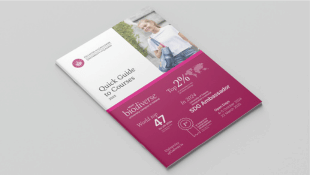
Quick Guide to Courses 2026 PDF (1.20MB)
-
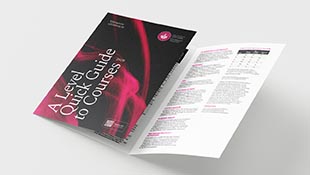
A-Level Quick Guide to Courses 2025 PDF (1.04MB)
-
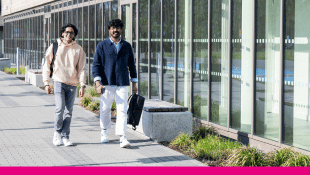
Pre-Arrival Guide 2025 PDF (1.6 MB)
-
.png)
Brazil Student Guide PDF (3.2 MB)
-
.png)
Chile Student Guide PDF (3.1 MB)
-
.png)
Colombia Student Guide PDF (3.1 MB)
-
.png)
Ghana Student Guide PDF (3.4 MB)
-
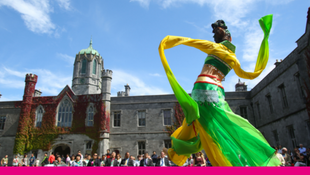
Hong Kong Student Guide PDF (3.6 MB)
-
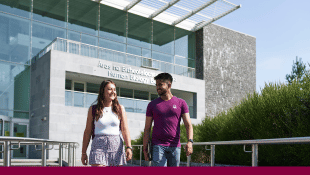
Indian Student Guide PDF (3.5 MB)
-
.png)
Indonesian Student Guide PDF (3.2 MB)
-

Malaysian Student Guide PDF (3.6 MB)
-
.png)
Mexico Student Guide PDF (3.1 MB)
-

Nigeria Student Guide PDF (3.4 MB)
-
.png)
North American Student Guide PDF (2.9 MB)
-
.png)
Panama Student Guide PDF (3.1 MB)
-
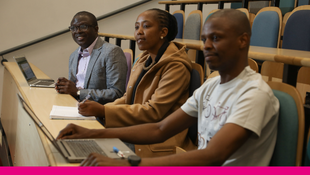
South African Student Guide PDF (3.7 MB)
-
.png)
Taiwan Student Guide PDF (4.0 MB)
-
.png)
Thailand Student Guide PDF (3.6 MB)
-
.png)
Turkish Student Guide PDF (4.2 MB)
-
.png)
UAE Student Guide PDF (3.4 MB)
-
.png)
Vietnam Student Guide PDF (3.39 MB)








